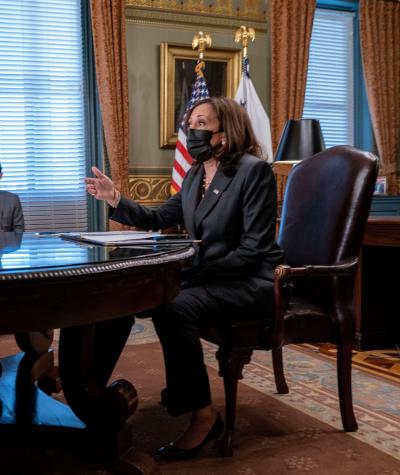The White House recently released a report detailing many of the barriers commonly faced by Native voters and described best practices for protecting the right to vote. This built on a White House directive issued on March 7 to expand voting access.
The report was developed in consultation with Tribal Leaders, Native voters, organizations working to protect the Native vote and state and local officials from jurisdictions with sizeable Native American populations.
Notably, the report will be released in written and audio formats in Navajo, Yup’ik, Ojibwe, Cherokee, Lakota and Native Hawaiian to help overcome the language barriers that often impact the Native community.
Native Americans have profoundly diverse backgrounds, and the Native voting experience reflects this. The report confirms that Native voters continue to face many of the same substantial and unique barriers to participating in the nontribal political process.
Some common challenges are language barriers — including those cause by failures to comply with language assistance provisions of the Voting Rights Act — cultural disrespect and outright hostility from local officials and fellow voters, extreme physical distance from in-person voting, and barriers to receiving mail.
Persistent poverty also compounds many of the barriers to voting that Native Americans already face.
The report outlines these barriers’ severe and persistent impact on Native voters. In 2020, Native people were registered to vote at a rate 13% lower than the national average and 17% lower than white Americans.
As a result of the substantial obstacles they face, Native people had the lowest voter turnout rates of any racial or ethnic group surveyed in the 2020 census, voting at a rate 18% lower than the national average and 21% lower than white Americans.
The report also details a path forward and urges federal, state and local governments to act on several key issues, like guaranteeing that existing laws are properly and equitably implemented. Additionally, jurisdictions must offer effective language assistance, even where they are not bound by the language assistance provisions of the Voting Rights Act.
Also, jurisdictions that require voter identification must ensure that Tribal IDs are an acceptable form of identification, which poll workers are properly trained to accept.
The report also underscores the need for better voter information and registration. Federal, state and local governments should work to equitably distribute voting-related information in an accessible manner to Native voters by improving high-speed broadband access and ensuring that rural-based voters can find information in the appropriate media.
Federal agencies that serve large Native populations should also work with states to become designated as voter registration agencies under the National Voter Registration Act.
It further emphasizes the need to create better opportunities for casting a ballot early, on Election Day and by mail by equitably distributing polling places on Tribal Lands and near Native communities, staffing them with Tribal citizens where possible.
The Post Office also should add and improve mail services on Tribal Lands by adding routes, providing addresses and upgrading their fleets to serve more rugged terrain.
More generally, the report highlights the need for state and local officials to ensure that existing laws are properly and equitably implemented and foster positive relationships with Tribal Governments and Native voters, including engaging in continued consultation with Tribal Nations on how to best protect the Native vote.
Finally, it calls on Congress to pass legislation like the Native American Voting Rights Act, John Lewis Voting Rights Advancement Act and/or Freedom to Vote Act, which would create equal opportunities for Native voters, restore preclearance and establish baseline protections to safeguard the freedom to vote for all Americans.
It also asks states to adopt legislation creating similar protections for Native voters.
Our democracy works best when all eligible voters can participate. We have a choice between a democracy that includes all eligible voters and a system that excludes people based on their circumstances or background.
While there is more work to be done, the White House should be applauded for taking important steps to expand ballot access for Native voters and all eligible Americans.

